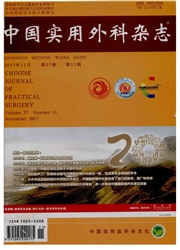

 中文摘要:
中文摘要:
干细胞移植作为再生医学的分支,近年来在血管外科领域中主要围绕治疗外科难治性肢体缺血开展了一系列的研究,并且通过转化医学的模式,已经将基础研究结果逐步应用于临床。多达30%的重度肢体缺血病人不适合手术而面临截肢,甚至失去生命。干细胞移植为这部分病人提供了新的治疗机会。根据移植细胞的种类总体可以分为骨髓单个核细胞、外周血单个核细胞和纯化CD34+细胞移植。骨髓单个核细胞最早被应用,因为其中CD34+细胞含量高,而CD34+细胞是形成新生血管的主要效应细胞,缺点是采髓量较大,需要麻醉。外周血单个核细胞采集简便,避免了这些不足,尤其随着集落刺激因子的应用,CD34+细胞含量得到显著提高。纯化CD34+细胞移植是新近报道的新方法,筛除了外周血单个核细胞采集物中其它的混杂细胞,旨在减少由此带来的潜在炎症性反应等负面效应。现有的基础以及临床研究证实3种方法均可达到满意的保肢效果,为外科难治性肢体缺血提供了新的选择。中远期疗效有待进一步随访观察。三者之间疗效的比较,以及是否存在各自对应的适用人群有待于今后进一步的对照研究。、
 英文摘要:
英文摘要:
As one of the branches of regenerative medicine, stem cell transplantation has already been used in clinical practice for management of surgically difficult limb ischemia in a translational fashion after a series of basic researches. Up to 30% of patients with critical limb ischemia are not eligible for current reconstructive procedures, either surgical bypass or endovascular revascularization, who will resuhantly lose their limbs or even lives. For them, stem cell transplantation provides a novel treatment alternative. According to the type of the transplanted cells, it could be divided into 3 categories: bone narrow mononuclear cells (BM-MNC) transplantation, peripheral blood mononuclear cells (PB-MNC) transplantation, and purified peripheral blood CD34+ Cells (PPB-CD34 + C) transplantation. BM-MNC was the initially used cell type because of its high proportion of CD34 + cells. However, it usually requires a high-volume aspiration of bone marrow and the general anesthesia. PB-MNC offers a more convenient and less invasive way of apheresis, particularly after the employment of G-CSF which significantly elevated the number of peripheral CD34+ cells. Successful application of PPB-CD34 +C was recently reported, eliminating the coexisting cells which were considered bringing a potential risk of inflammatory reaction. So far, transplantation of either type of cells could yield satisfactory treatment outcomes for limb salvage. Their respective mid-to-long-term results and the difference in efficacy between them are pending follow-up and a randomized control study.
 同期刊论文项目
同期刊论文项目
 同项目期刊论文
同项目期刊论文
 期刊信息
期刊信息
